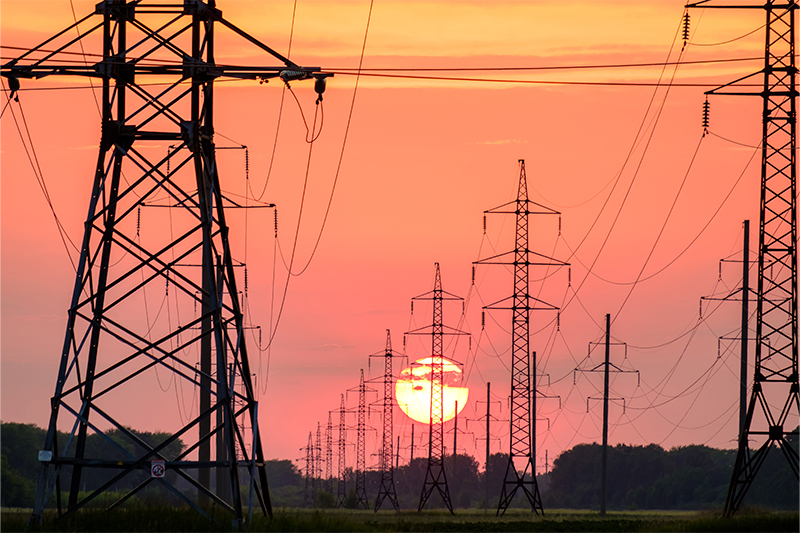
Horizon Scanning for Summer 2023
Assessing business resilience risks, issuing a summer 2023 heatwave warning is sensible. As a practitioner, part of your duties is to conduct horizon scanning and ongoing risk assessments. Business risks are paramount, and employee considerations are a large part of the equation. So, it makes sense to understand how environmental factors can hinder business resilience.
NASA identified that “springtime heatwave has made large swaths of western North America feel like the dog days of summer. In mid-May 2023, western Washington and Oregon, along with much of British Columbia and Alberta, Canada, were in the throes of a record-breaking streak of hot weather”. Of course, this evaluation is for operations in the northern hemisphere as the winter season is starting elsewhere. Regardless, many experts predict that the upcoming season will be difficult in terms of heat indexes and corresponding impacts.

Climate Swings and Tempature Risks
Last year, I wrote about a Summer 2022 Power Outage Risk, and that concern certainly applies here. However, as outlined by NASA, part of the concern is that areas of the Americas, like the Northwestern US and Canada, are experiencing unusually high temperatures. Their infrastructure is not built to handle high heat. For example, the average July temperatures for Washington state are 75 °F. Now, variability in seasons and climates are a norm for our planet. Yet, we seem to be in a climate of temperature swings.
The United States is a good case study of shifts in climate due to the many microclimates experienced across the country. Even in places like Texas which often experience high heat events, this June saw record-breaking temperatures compounded by an expected duration of multiple weeks of over 120 degrees Fahrenheit. The risk is multi-fold here–both to the overall health of populations and the increased strain on the power grid. In this case, Texas’ deregulated power grid provides independence but isolation from the rest of the nation’s system. I certainly could go through an analysis of Canada’s off-grid communities’ challenges and Mexico’s plan to renationalize its power generation. However, for the sake of brevity my blogs are known for, I will share that I believe all nations are at risk for heatwave impacts.

Some Countries Are More At Risk Than Others
Not all situations are equal, of course. My Summer 2023 heatwave warning focuses mainly on my nation, along with an understanding that some are more at risk than others. According to an April 2023 article in Nature Communications, the most at-risk regions worldwide for high-impact heatwaves are spread across the globe. Yet, for the reasons I stated earlier, many countries have pockets or systemic challenges indicating inherent risk from this threat type.
Climate changes alarmists state that extreme fluctuations in temperature will lead to excess deaths. So far, the most significant impacts are to the anticipated most vulnerable populations, which makes it no less unfortunate. This is where the combination of the execution of local emergency management plans and public-private partnerships can make a substantial positive difference. Yet, according to the scientists, regions where a record-breaking event is most likely, are areas where the event would be most unmanageable.

The Importance of Residual Risk
So, after understanding the inherent risk to business resilience, then installing controls, it is imperative to identify residual risk. As stated by Rachel Slabotsky, “Residual risk is the amount of risk that remains after controls are accounted for.” To take that to a practical level to assess your company’s risk from summer heat waves, you’ll want to understand the environment your people operate in. It makes sense to ask if the operations are in areas at risk from this threat type. Then, evaluate what controls are in place to minimize the risk to operations overall.
Finally, identify the difference between the inherent risk, controls, and the remaining risk. Is the potential impact of that difference enough to indicate a real and present danger over the next few months? Could a prolonged PSPS by local utilities interrupt key Service Level Agreements (SLAs)? If power is interrupted due to brown or blackouts, could employees’ health or life safety be a concern? Additionally, could a sizeable regional heatwave and subsequent power outage impact the ability to shift work elsewhere and cause unacceptable business interruptions? All of these and more are good questions to ask to evaluate risk.

Increase Resilience & Minimize Impacts
To increase business resilience and minimize the impacts of heatwaves, here are some key strategies:
Develop a Heatwave Response Plan: Create a comprehensive plan tailored to heatwave events. Identify potential risks, establish employee health and safety protocols, and outline steps to mitigate operational disruptions. Regularly review and update the plan as needed.
Improve Infrastructure and Facilities: Enhance the physical infrastructure of your business to withstand high temperatures. Insulate buildings, install energy-efficient windows, and use reflective roofing materials. Consider implementing shade structures or awnings to reduce direct sun exposure and provide outdoor cooling areas for employees and customers.
Upgrade Cooling Systems: Ensure your cooling systems are well-maintained and capable of handling increased cooling demands during heat waves. Install energy-efficient air conditioning units and consider implementing backup procedures or generators to minimize the risk of system failures.
Implement Energy Conservation Measures: Reduce energy consumption by implementing energy-saving initiatives. This includes optimizing HVAC settings, upgrading to energy-efficient lighting, and using programmable thermostats. Encourage employees to adopt energy-saving practices such as turning off unnecessary equipment or lights.
Diversify Supply Chains: Heatwaves can disrupt supply chains, mainly if they affect vital suppliers. Diversify your suppliers and maintain strong relationships with multiple vendors to minimize the risk of disruptions. Regularly assess and address any vulnerabilities in your supply chain to ensure resilience.
Cross-Train Employees: Ensure your employees are cross-trained in various roles and responsibilities to mitigate the impact of staff absences during heat waves. This will help maintain operational continuity and ensure critical tasks can still be performed in case of personnel shortages.
Develop Remote Work Capabilities: Consider implementing flexible work arrangements, including remote work options during extreme heat events. This can help protect employee health and reduce the strain on infrastructure. Ensure that employees have the necessary technology and tools to work remotely effectively.
Employee Health and Safety: Prioritize the well-being of your employees by implementing measures to protect them during heat waves. Provide access to cool drinking water, establish shaded rest areas, and educate employees on heat-related illnesses and prevention strategies. Encourage them to take regular breaks and adjust work schedules if necessary.
Collaborate with Local Authorities: Stay informed about local heatwave warnings and collaborate with relevant authorities and emergency management agencies. Participate in community initiatives and share resources to prepare for and respond to heatwave events collectively.
Data Monitoring and Analysis: Implement a monitoring system to track temperature and humidity levels within your business premises. This will enable you to identify potential heat-related risks and proactively address them. Analyze historical data to understand patterns better and develop strategies for long-term resilience.

Summer's Ahead and Business Resilience
Remember, business resilience to heat waves requires a holistic approach considering infrastructure and employee well-being. Regularly review and update your strategies based on new insights and lessons learned from previous heatwave events. It is essential to keep abreast of climate changes and avail yourself of expert analysis like that provided by the National Weather Services’ Summer 2023 Climate Outlook. In short, they expect a 50-60% chance of above-average temperatures. In my book, that’s enough reason to raise the concern to your resilience team and plan for contingencies.
Although it looks like a near-normal hurricane season for the US, we know it only takes one bad one to cause widespread calamity. El Niño conditions have developed, too. So, the atmospheric response to the warmer-than-average tropical Pacific sea surface kicked in June, indicating warmer temps for Canada and the northern US. If predictions hold, it will be wetter across the southern half of the US to the East Coast. It could equate to more severe storms in the Southern US and warmer temps across the US. In my estimation, we could be in for a wild ride this summer. And the pattern of extreme heat has already continued into 2023 for Europe.
So readers, what are your predictions for the Summer Season? Are heat waves on your radar, and what are you doing to prepare? Leave your comments below.
Did You Know?
Disaster Empire blogs contain embedded links to source materials, articles of interest, videos, books, and training I recommend. Just click on the blue embedded link to access the resource.
